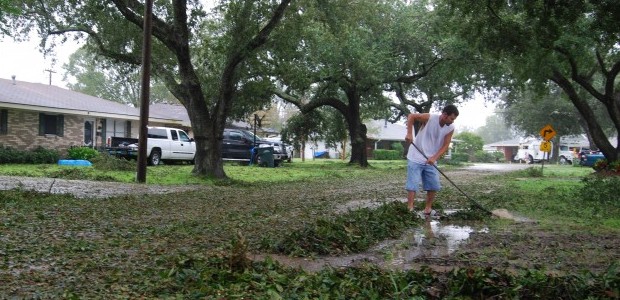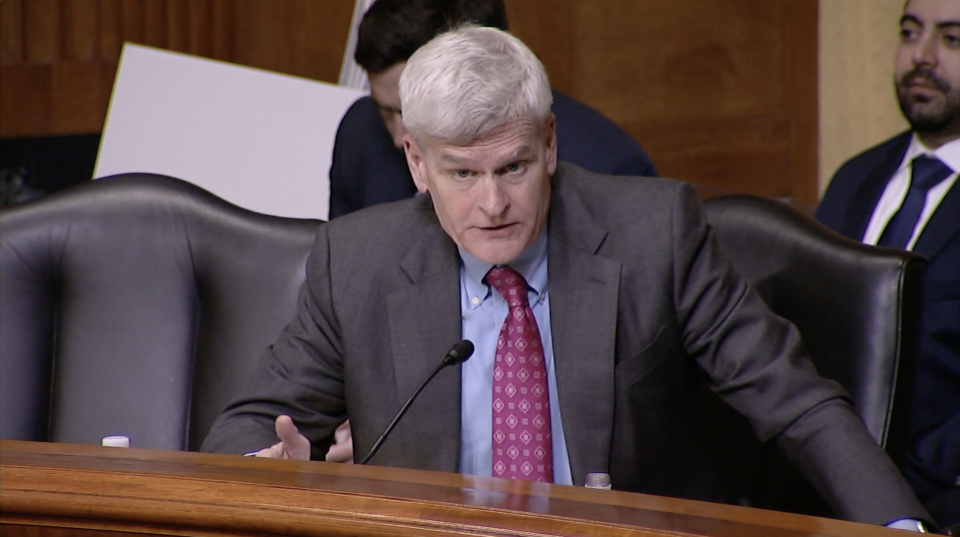September Exhibits
September 5, 2012
Locals opt to ‘shelter in place’
September 5, 2012By ERIC BESSON and MIKE NIXON
eric@tri-parishtimes.com
mike@tri-parishtimes.com
As power poles snapped, sheds collapsed and tidal waves crashed against the South Lafourche ring levee system last week, Golden Meadow native Kevin Terrebonne watched it happen from behind two swishing wiper blades.
Terrebonne, a 25-year-old heavy equipment operator, spends the hurricane offseason in an excavator building the south Lafourche levees. While Isaac berated Lafourche Parish, he was one of 12 employees splitting two 12-hour shifts to maintain the system, a task that included greasing 33 pumps at six stations, keeping the filters clean from lilies and debris and weathering the storm from inside a wobbling vehicle.
“Tuesday and Wednesday night were both pretty intense,” Terrebonne said. “It was sideways rain. At one time, we were parked in the truck and the wind was actually sliding the truck in the rocks. When it would gust, it would just move the truck a couple of inches. We were just there in park, and the wind was moving the truck.”
Along with partner Cody Guidry, Terrebonne was a roving maintenance man, cycling between the pumps that need to be serviced every three hours. A seven-year veteran of the district, the South Lafourche High School alum said the conditions were the worst he had been out in, although crews were not permitted to go out during Hurricane Katrina.
“It was rough,” Terrebonne said. “They’re saying Category 1, but I think we had worse than that. It was pretty windy.”
The system, as was the case for hurricanes Katrina, Rita, Gustav and Ike, withstood Isaac. In part because of extensive north winds during the first half the storm, its surge didn’t really threaten the system. Water elevation peaked at 6.8 feet near the Leon Theriot Lock in Golden Meadow, which is elevated to 16 feet. For perspective, that area saw 7.2 feet of water during Hurricane Juan and 8 feet of water during Gustav.
Terrebonne, who still lives in Golden Meadow, expressed confidence in the system that protects roughly 20,000 people and 8,000 homes, including his own.
“I think we’re pretty good,” Terrebonne said of the system. “You can’t say unbreakable because of Mother Nature, but I think we’re pretty well set for whatever it brings.”
Not many levee systems are as cohesive as the Larose-to-Golden Meadow ring levee in south Lafourche, and that includes the northern end of the parish. North Lafourche Conservation, Levee and Drainage District Executive Director Dwayne Bourgeois acknowledged that the district has a lot of work ahead of itself, but said the piecemeal system held up “OK” through Isaac.
Elevated water in Bayou Des Allemands overtopped a 4-foot-high protection levee bordering the Kraemer community, but a coordinated, multi-agency and residential-volunteer effort had contained the flood threat with sand bags and water bladders by Sunday.
Aside from that, the levee district faced issues with the “usual suspects,” Bourgeois said. A sand berm had to be deployed on Industrial Park Road near the intersection of the Intracoastal Waterway and Bayou Lafourche. Also, Hesco baskets were used to fill a gap in the levee along Company Canal in Lockport.
“We’re going to be assessing exactly where water topped in all parts of the parish and making sure that the project is either planned currently or we will plan a project and do that project as resources become available,” Bourgeois said.
Isaac gave Terrebonne Parish’s Morganza to the Gulf storm protection system, and locally improved levee and pump projects their first real weather test since hurricanes Gustav and Ike left the region saturated in 2008.
While no reports of home or business flooding were listed with Terrebonne Parish officials by Thursday, a survey of residents found the biggest problems, in addition to power outages, to be temporary street and yard flooding, along with wind damage to trees and select structures.
The one certainty, according to Terrebonne Parish Public Works Director Greg Bush, is that storm systems were better equipped for the first hurricane of the 2012 season to hit Louisiana than they had been for previous storms of the same strength or duration.
On Thursday, all 72 permanent pump stations in Terrebonne Parish were operating properly and levees were holding as designed.
“The only over-the-top (levee breech) we had was a small one in Pointe-aux-Chenes,” Bush said. “But there was no damage because of it.”
Terrebonne Parish Public Works also operates 1,650 lift stations. Crews rotated use of generators to restore service to the stations where electric service had been interrupted.
“We minimized (damage) where there could have been a lot of flooding,” Terrebonne Levee and Conservation District Executive Director Reggie Dupre said the levee and floodgate system his agency has been building during the past decade.
Dupree acknowledged that Hurricane Isaac offered a genuine test for the interior Morganza to the Gulf levee and floodgate system. He also said because landfall was made in Lafourche Parish, water falling on Terrebonne Parish was pushed out to the Gulf of Mexico, leaving tidal increases only two-feet above normal.
“If it had landed in Morgan City we could have had a major problem (because of tidal surges),” Dupree said.
The district took advantage of north winds during the first half of the storm, leaving open the Houma Navigation Canal Flood Gate and allowing the gusts to push water out of the system. As the eye spent hours hovering over the parish, crews closed the floodgate to prepare for southern winds.
“We were hit head-on by Hurricane Isaac,” Terrebonne Parish President Michel Claudet said. “The improved levees by both the levee district and the parish made a big difference during this event.”
Claudet and Bush agreed that having cleared select drains and having all pumps operational made the difference between controlling Isaac waters compared to flooding that took place during general rain storms in August.
“As much as we were prepared, and our people performed well, we have to remember this was only a Category 1 [storm],” Claudet said. “We will continue to improve our infrastructure and preparation for the people of Terrebonne.”
As the final remnants of Isaac passed, Bush asked that residents assist crews with continued drainage conditions by removing leaves and other debris from yards and gutters near their homes and businesses. He also said each hurricane experience adds to knowledge even when ultimate opinions on the severity of storms vary.










